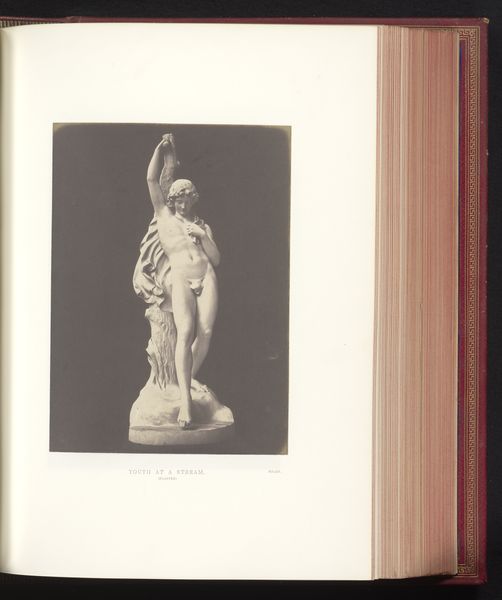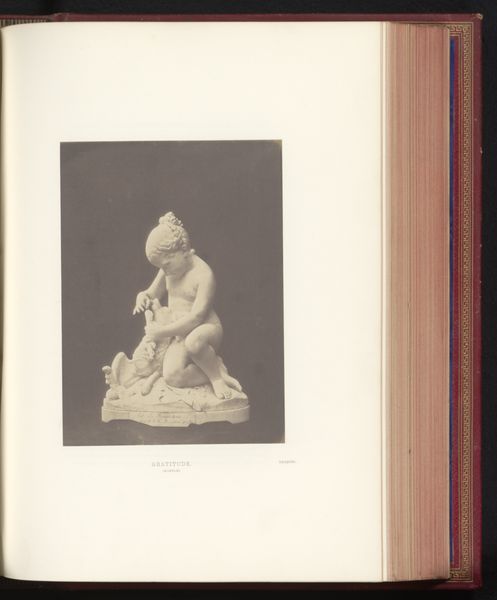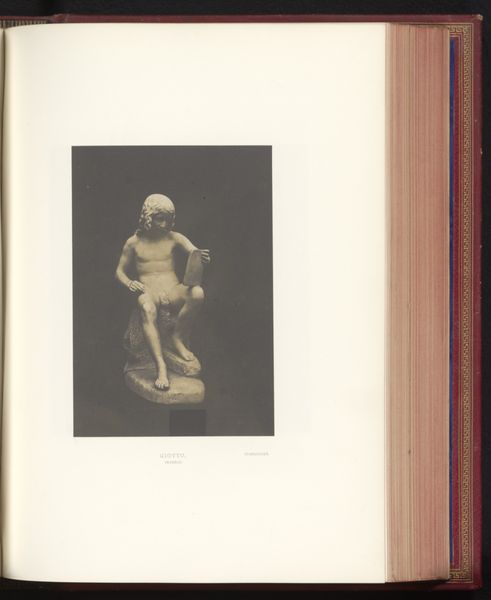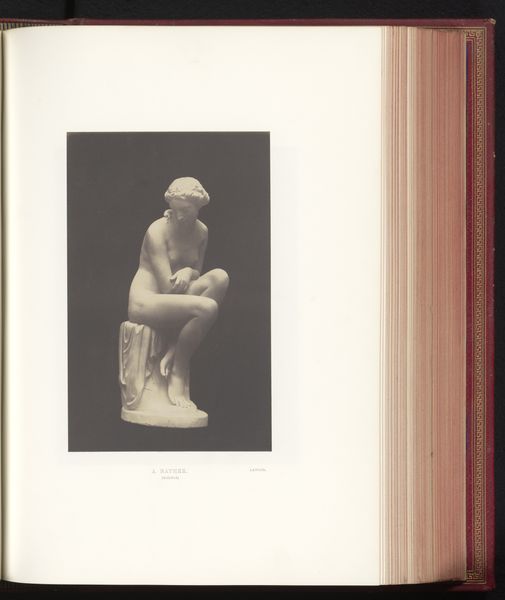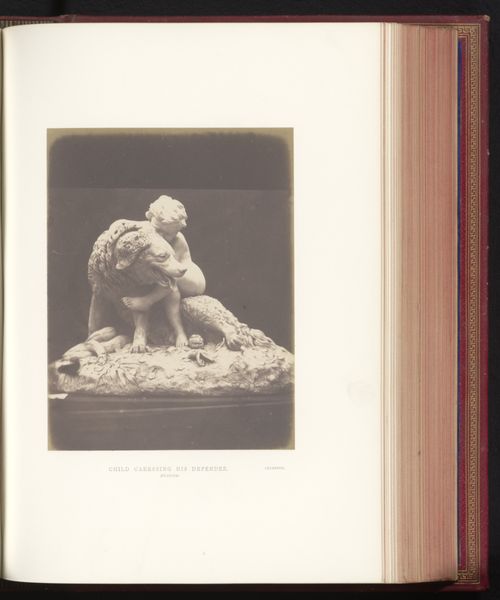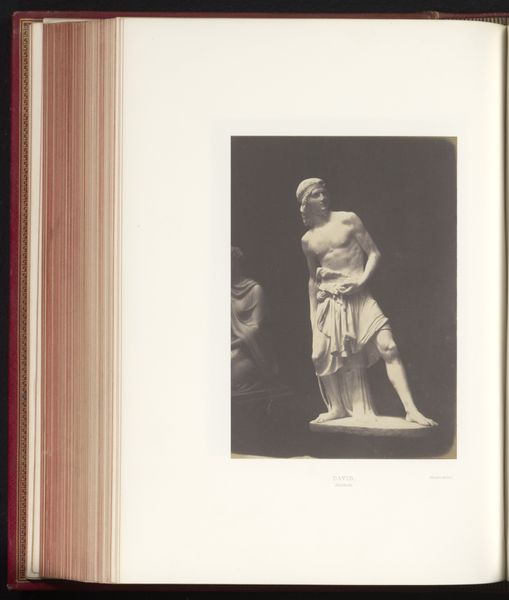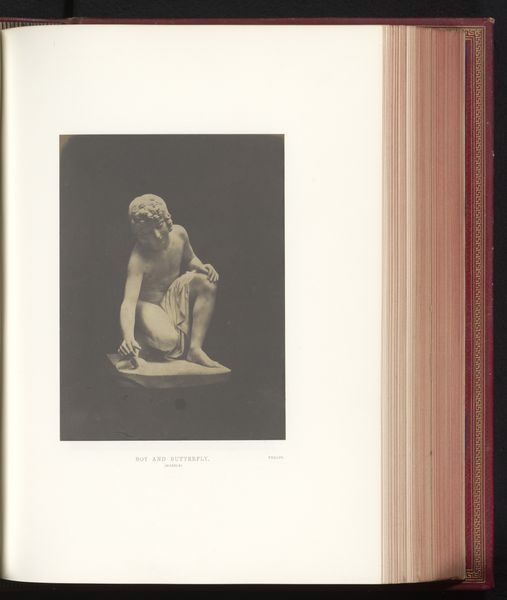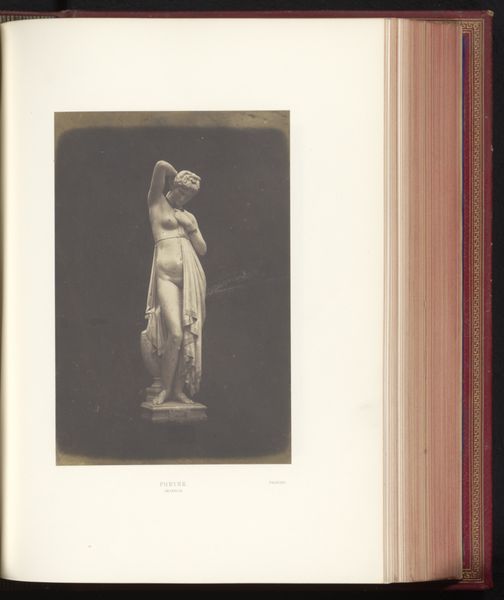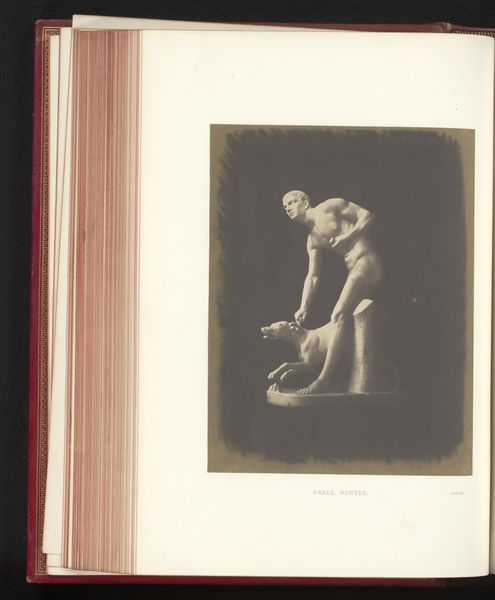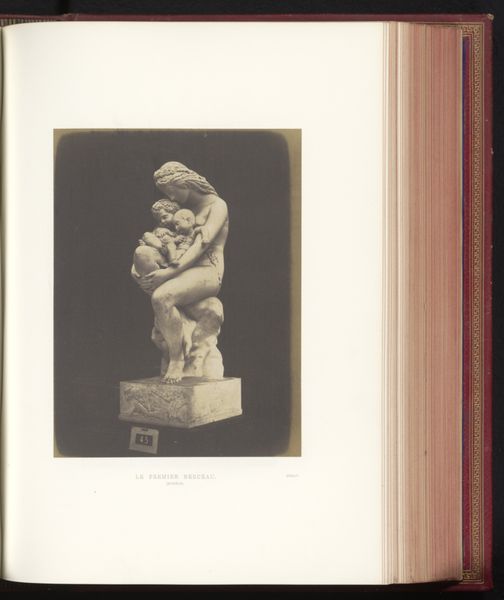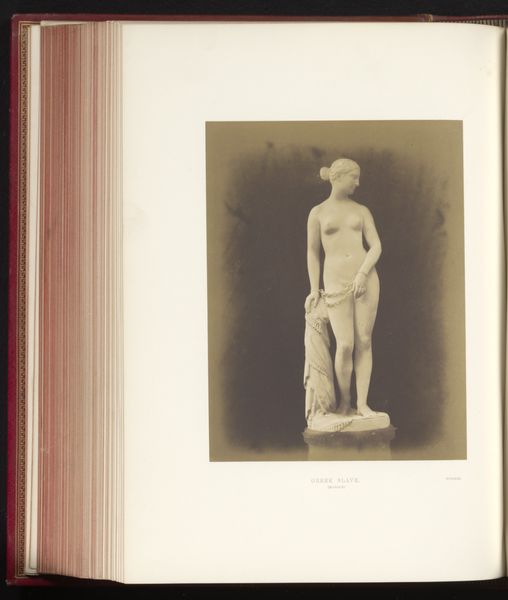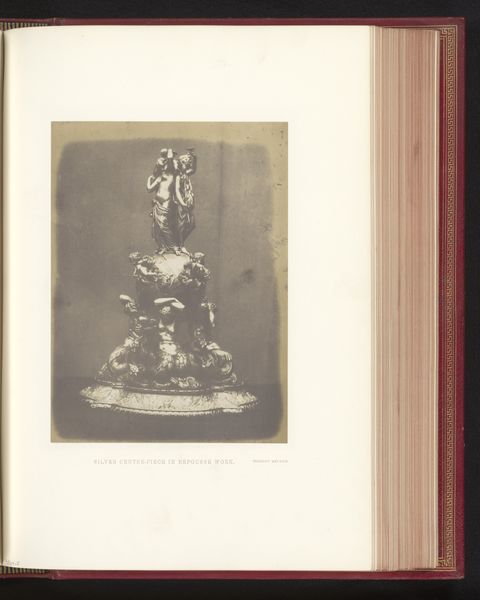
Sculptuur van Sabrina door William Calder Marshall, tentoongesteld op de Great Exhibition of the Works of Industry of All Nations van 1851 in Londen 1851
0:00
0:00
print, daguerreotype, sculpture, marble, albumen-print
# print
#
daguerreotype
#
sculpture
#
carved
#
academic-art
#
marble
#
nude
#
albumen-print
Dimensions: height 205 mm, width 148 mm
Copyright: Rijks Museum: Open Domain
Editor: So, this is a photograph of William Calder Marshall's marble sculpture, Sabrina, as displayed at the Great Exhibition of 1851. There’s something so serene about it, this quiet nude figure… What significance do you find in her posture, the way she’s seated? Curator: The seated pose itself speaks to centuries of artistic tradition. Think back to ancient depictions of goddesses, muses, often found in similar contemplative poses. Consider the title itself; Sabrina. She is a figure from Welsh and English folklore, a nymph associated with the River Severn. Marshall invokes not only classical ideals of beauty and form but also this very particular cultural memory embedded within the British Isles. How does that juxtaposition strike you? Editor: It’s interesting how he blends the classical nude with a specific regional identity. Does the choice of marble contribute to this, considering its association with ancient sculpture? Curator: Absolutely! Marble provides that immediate visual link to antiquity, reinforcing the sculpture's ties to timeless artistic ideals. The texture, the implied coolness of the stone – it all elevates Sabrina beyond just a portrait. Notice also how the print itself – likely an albumen print capturing a daguerreotype image of the sculpture – flattens the form and imbues the work with both a sculptural and photographic quality. How might the translation of the sculpture to photograph inform your reading of its meaning? Editor: I hadn’t considered the print medium adding another layer. So it’s not just about Sabrina herself, but how she’s been reproduced and seen, this almost archaeological record… it becomes about Victorian tastes, too, and how they chose to represent their relationship with mythology, the land and with classical ideas of the figure? I find it much richer now. Curator: Indeed. It becomes a dialogue across time and media.
Comments
No comments
Be the first to comment and join the conversation on the ultimate creative platform.
